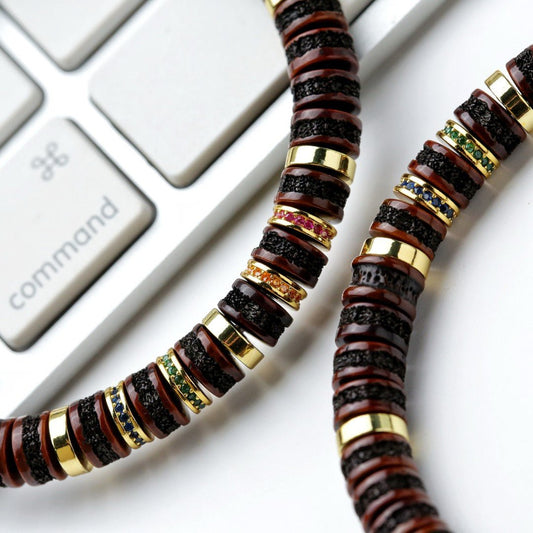
Amid the detailed mesh amidst Tibetan religious beliefs lie two compelling artifacts: the elaborated thangka and crafted bodhi seed. Every one, in its special manner, acts as a gateway for transcendental understanding. The thangka, an intricate scroll, illustrates divine figures, symbolic diagrams, or Buddhist narratives, serving as a contemplative tool.
Alternatively, the bodhi bead, often crafted from unique minerals, timber, pips, or skeletal fragments, is a tangible reminder of Buddha's nirvana under the bodhi tree. Holding these beads during prayer or meditation helps to focus the mind.
- Individually, the thangka and the bodhi bead represent the path to liberation. They offer a tangible link to the timeless doctrines of Tibetan Buddhism.
Myths Carved in Camel Bones
Across the sands of time, antique treasures whisper tales pertaining to a world long lost. These are not treasured objects of shadowed empires, but plain camel bones engraved with figures that safeguard the stories of a bygone cycle. Every fragment holds the echo originating from a life lived, a journey traveled, and a connection to the ancestral wisdom within which envelops us all.
- Those pieces
- Gifts
- Represent
Understanding the Iconography of Thangka Creations
Tangkas are captivating paintings on canvas, meticulously crafted by Tibetan artists to depict spiritual figures and scenes from Buddhist traditions. Each detail within a thangka is laden with relevance, forming a complex tapestry of visual narratives that guide the viewer on a philosophical journey. The tints used in thangkas are not merely aesthetic choices but carry deeper connotations, exemplifying different aspects of the Buddhist path. From the solemn figures to the intricate decorations, thangkas offer a view into the rich world of Tibetan Buddhism, inviting us to contemplate upon its truths.
- Established thangka art often depicts key Buddhist figures such as Buddha Shakyamuni, Bodhisattvas like Avalokiteshvara and Manjushri, and enlightened beings from various movements of Tibetan Buddhism.
- Beyond these representations lies a wealth of wisdom that can be understood by those who analyze the symbolic language of thangkas.
Awakened One's Path to Enlightenment: Embodied in Beads and Bone
Upon the winding track to enlightenment, the Buddha embraced artifacts imbued with profound significance. These bead and relic held within them the core of his wisdom, manifesting glimpses into the fabric of reality. By way of their form, the Buddha communicated profound truths that outstrip the realm of prosaic perception.
From said spiritual beads, crafted from precious materials, emanated vibrations that resonated with the evanescent flows within. The fragment of a creature, meticulously transformed into insignia, served as tangible indicators of the impermanence native to all forms.
Thangkas: Windows into Himalayan Spirituality
Thangkas luminous paintings on cloth serve as effective representations of Himalayan spirituality. These intricate works of art, meticulously created with detailed brushstrokes, depict a vast array comprising Buddhist deities, mandalas, and scenes from time-honored scriptures. Each thangka is a spiritual map for meditation and contemplation, offering awareness into the intricate teachings of Buddhism.
- They are often used in ritual ceremonies to facilitate
- expressing states of spiritual illumination.
- Thangkas are not merely decorative elements but rather glimpses into the rich and fascinating world of Himalayan spiritual traditions.
The Spiritual Significance of Bodhi Beads in Mindfulness and Compassion
Each sphere on a bodhi bead mala whispers tales of ancient wisdom, guiding us on a expedition through the tranquil waters of mindfulness. As we carry these intricately fashioned beads, our fingers trace the contours of separate one, anchoring our cognition in the present moment. The gentle feel of the beads against our palms serves as a tangible reminder to respire, fostering a sense of equanimity.
- With every bead that passes between our fingers, we foster compassion, extending it first to ourselves and then outward to the world.
- Oriental wisdom teaches us that mindfulness is a ability that requires patience and commitment.
With the aid of the rhythmic repetition of mantra or simply the mindful enumerating of the beads, we disengage from the relentless chatter of the mind.
The practice applying bodhi beads is a beautiful invitation to re-engage our connection with ourselves and the world around us.
Manifesting Intent: Building Camel Bone Bracelets for Sacred Development
Intent embodies an inherent energy in our lives, shaping our experiences and guiding us towards our spiritual goals. When we combine this intention with the old knowledge of crafting a camel bone bracelet, we create a potent synergy that can catalyze our spiritual growth.Camel bone carries profound symbolism, representing endurance. Its natural beauty and rustic charm serve as a constant reminder of the inherent power within each of us.By deliberately picking each shard, channel our desires into the bracelet. With every knot or stitch, we insert our hopes, dreams, and aspirations for spiritual evolution. This act of creation becomes a contemplative exercise, aligning us with our inner wisdom and guiding us on a pilgrimage of understanding.- Consider the colors and patterns within the camel bone to reflect your intentions.
- Project your aims as you bind each component.
- Bless the bracelet in ceremonies to infuse vitality.
Camel Bone and Buddhist Symbolism: A Legacy of Meaning
In the rich tapestry inside Buddhist tradition, artifacts often hold profound symbolic meaning. Amongst these varied objects, camel bone stands out as a noteworthy and fascinating element. Within history, this material has been applied in the crafting during various Buddhist items, each imbued with specific connotations.
- Considered as a symbol of resilience and strength due to the camel's ability to survive in harsh environments, camel bone often embodies spiritual fortitude.
- In addition, the color and texture of camel bone are believed by some to hold auspicious connotations, reflecting purity and serenity.
Therefore, camel bone has become a significant part of Buddhist culture, serving as a tangible bridge to the profound teachings through this ancient faith.
Thangka Works: Stories of the Divine
Within the ethereal realm of Tibetan Buddhism, Thangka paintings emerge as sacred portals to enlightenment. These stunning works, meticulously crafted by skilled artists known as thangkapa, depict a myriad composed of vibrant deities, celestial beings, and mythical creatures. Each brushstroke embodies profound spiritual significance, narrating ancient tales and philosophical teachings.
- Presenting a vast reservoir of Buddhist iconography, Thangkas serve as both devotional objects and instructional tools. Dedicated practitioners gaze upon these paintings during rituals and meditations, seeking to achieve spiritual wisdom.
- Ornately decorated with intricate details and vibrant hues, Thangkas are considered windows into the divine. Every single painting acts as a symbolic representation of the Sage's teachings and the path to liberation.
Via their potent imagery and symbolism, Thangka paintings offer a glimpse into the rich mystical traditions of Tibet. They are a testament to the enduring beauty of Tibetan art and its profound ability to stimulate.
Embracing the Duality: Thangkas and the Cycle of Life and Death
Thangkas, vivid tapestry scrolls of the Himalayas, manifest an intense meditation on mortality’s impermanence. Each intricate drawing depicts deities and beings engaged in the continuous passage of life and death, a tapestry of birth, growth, impermanence, and resurgence. The artists skillfully interlace these Tibetan-style prayer beads concepts within the thangka's universe, highlighting the correlation of all things. Through vivid illustrations, they invite us to meditate on our own being. The cycle returns, a dance of coming and going, accentuating the preciousness of each moment. By embracing this duality, thangkas teach us to acknowledge the beauty in both life's joys and sorrows.Threads of Devotion: The Significance of Bracelets in Buddhist Practice
In the intricate tapestry of Buddhist practice, seemingly unassuming objects often hold profound meaning. Among these are bracelets, which serve as tangible representations of devotion and commitment to the doctrine of Buddha. Worn on the wrist, a bracelet works as a constant reminder of one's aspirations and aims. It can express the impermanence of life, fostering practitioners to remain present in the present moment. Some bracelets may incorporate sacred symbols, such as mantras or the names of Buddhas, which are believed to invoke positive energy and protection. Others may be made from materials with spiritual significance, like sandalwood or lotus seeds, adding the bracelet's potency. Ultimately, the significance of a Buddhist bracelet originates far beyond its physical form. It becomes a powerful tool for mindfulness, a motivation to live in harmony with the teachings of Buddha, and a origin of one's unwavering trust.